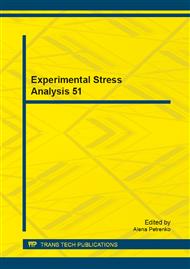p.301
p.307
p.313
p.319
p.323
p.327
p.333
p.341
p.347
Utilization of Recycled Fine-Ground Concrete from Railway Sleepers for Production of Cement-Based Binder
Abstract:
The environmental awareness and potential cost reduction have promoted the recycling of materials in civil engineering. This paper is dealing with the recycling and secondary use of old concrete railway sleepers for reconstruction of old railway lines. In particular, it is focused on the investigation of material properties of a binder prepared from finely crushed old concrete sleepers. This material could be used for strengthening of subsoil and embankments supporting the railway structures. The study shows that the compressive and bending strength of the investigated material is sufficient for this purpose and that the strength can be further increased by suitable curing conditions. These findings could contribute to the utilization of old concrete sleepers during railway reconstructions and safe money spent for the purchase of new materials and disposal of old sleepers.
Info:
Periodical:
Pages:
323-326
Citation:
Online since:
December 2013
Price:
Сopyright:
© 2014 Trans Tech Publications Ltd. All Rights Reserved
Share:
Citation:


